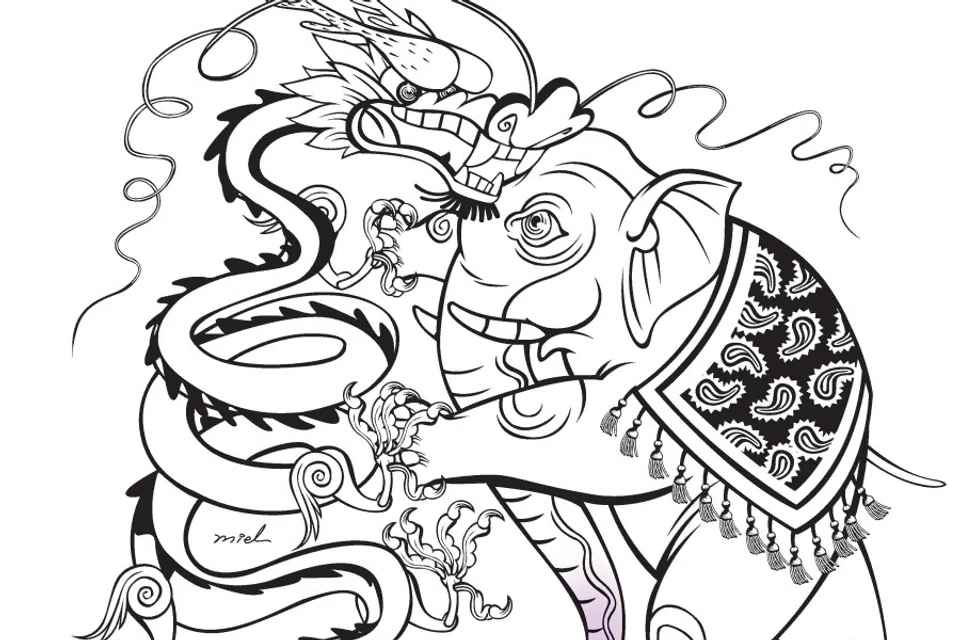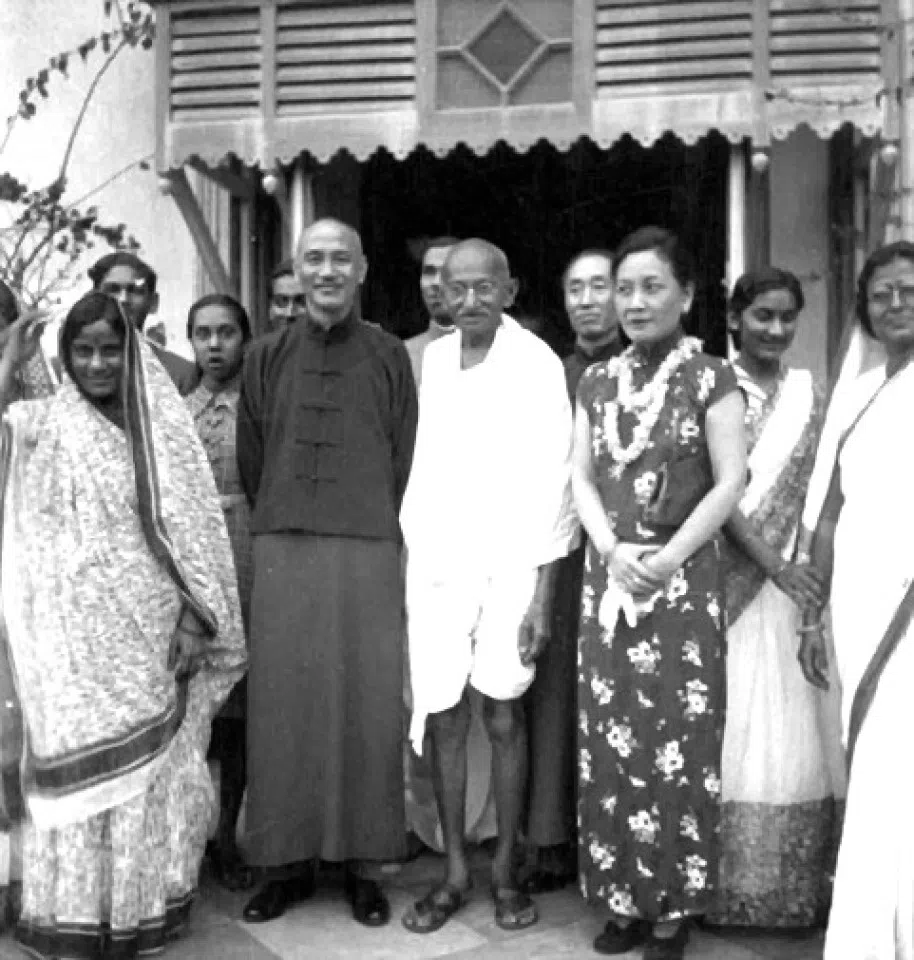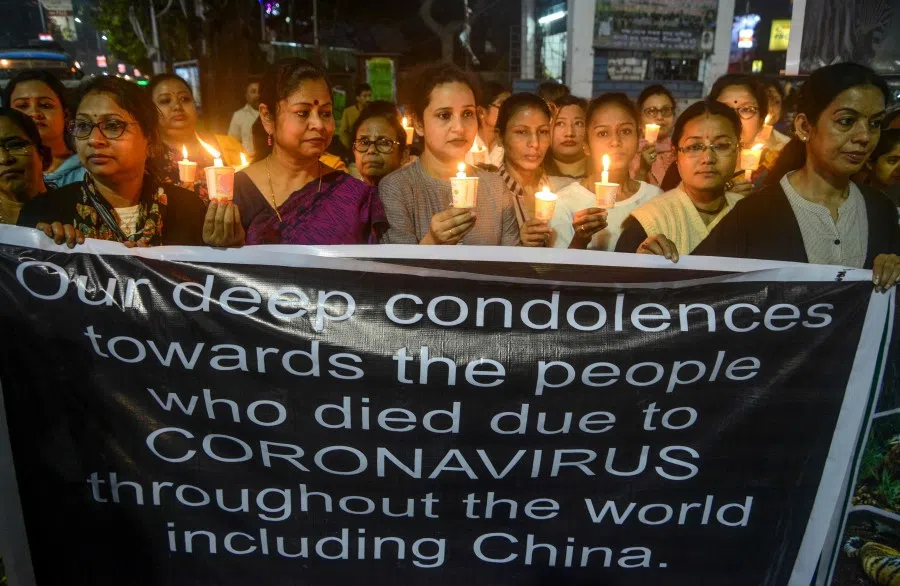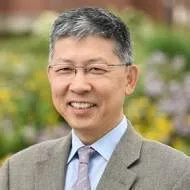Uneasy Dance between an elephant and a dragon: 70 years of diplomatic relations between India and China
While the days of "Hindi Chini Bhai Bhai (India and China are brothers)" in the 1950s may have passed, China-India relations seem to be on an even keel as the two Asian giants mark their 70th anniversary quietly amid the Covid-19 outbreak. Zhu hopes that however the world order changes after the pandemic, the two neighbours will work together for the greater good for years to come.

1 April 2020 marked the 70th anniversary of diplomatic relations between the Republic of India and the People's Republic of China (PRC). Due to the Covid-19 pandemic, the two countries have so far not been able to hold any events to celebrate the occasion. What are the current status, major challenges and future prospects of this important bilateral relationship?
On 1 April 1950, India became the first non-communist country in Asia to establish diplomatic relations with the PRC.
India under British rule maintained formal relations with the Republic of China (ROC). ROC President Chiang Kai-shek and his wife Madame Soong Meiling visited India and met with Indian leaders including Mahatma Gandhi in 1942. India aided China's war against the Japanese invasion. The end of the British Raj led to the creation of two separate states in 1947 - India and Pakistan. Two years later the PRC was formed when Chiang's ROC government lost the Chinese Civil War and fled to Taiwan. India recognised the PRC in December 1949, and the ROC subsequently cut official ties with India. On 1 April 1950, India became the first non-communist country in Asia to establish diplomatic relations with the PRC.

The border dispute and India's hosting of the Dalai Lama created a huge crack in India-China relations in the late 1950s.
Chinese Premier Zhou Enlai paid a friendly visit to India in 1954. In the same year, Indian Prime Minister Jawaharlal Nehru became the first head of government from a non-communist country to visit the PRC. The two leaders became major advocates of the so-called "Five Principles of Peaceful Coexistence" or Panchsheel. Both attended the Asian-African Conference - the Bandung Conference - in Indonesia in 1955 and promoted the "Bandung Spirit" of solidarity, friendship and cooperation. The slogan "Hindi Chini Bhai Bhai (India and China are brothers)" captured the closeness of the relationship between the two ancient and yet new countries in the 1950s.
In 1959 the 14th Dalai Lama, after a failed uprising, escaped Tibet and found refuge in India, where he has been in exile since. The border dispute and India's hosting of the Dalai Lama created a huge crack in India-China relations in the late 1950s. The relationship plummeted after a brief war in 1962 over a border dispute which has yet to be fully resolved.
After the Sino-Soviet split during the Cold War, India sided with the Soviet camp while China developed close relations with Pakistan. India and China did not resume relations at the ambassadorial level until 1976. Relations remained frosty for much of the 1970s and 1980s until Prime Minister Rajiv Gandhi's historic visit to China in 1988. Three years later, Chinese Premier Li Peng visited India, restoring the tradition of mutual visits at the prime ministerial level after decades of suspension.

Issues such as the border disputes, the Dalai Lama, China's close ties to Pakistan, and growing strategic rivalry continue to challenge India-China relations today. Meanwhile, the two countries share many interests as the two largest emerging economies and have significantly expanded spheres of cooperation.
China's commercial expansion into South Asia in recent years, especially the China-Pakistan Economic Corridor (CPEC) as part of the Belt and Road Initiative, has raised great concerns in India.
Notably, China and India are members of the BRICS (Brazil, Russia, India, China, and South Africa) and the New Development Bank, which is headquartered in Shanghai, China and headed by well-known Indian business executive K.V. Kamath. India was also a founding member of the China-led Asian Infrastructure Investment Bank (AIIB) when it was established in 2015. In addition, India, along with Pakistan, is a member of the Shanghai Cooperation Organisation (SCO), the most significant international organisation promoting security and economic cooperation among Eurasian countries.
China's commercial expansion into South Asia in recent years, especially the China-Pakistan Economic Corridor (CPEC) as part of the Belt and Road Initiative, has raised great concerns in India. India is also irritated by China's continued opposition to its membership in the Nuclear Suppliers Group by insisting that India is not a signatory of the nuclear Non-Proliferation Treaty (NPT).
On the other hand, China is vigilant of India's participation in the quadrilateral security dialogue (The Quad) with the US, Australia, and Japan. China is particularly concerned that India may be joining the United States as part of Washington's "Indo-Pacific" strategy to counter China's rise. China is already surrounded by several hotspots in its strategic rivalry with the US such as the Taiwan Strait, the South China Sea, and the Korean peninsula. From the realist perspective, the last thing China wanted to see is the formation of an India-US alliance against China.
In fact, bilateral trade, investment, and people-to-people exchanges have greatly increased in the past decade.
Following the 2017 military standoff in the Doklam/Donglang area which brought the two sides dangerously close to a border conflict, Prime Minister Narendra Modi and President Xi Jinping have held two informal summits in Wuhan and Chennai respectively. They highlighted the deep historical connection between the two ancient civilisations and vowed to cooperate in the rapidly changing contemporary world. Such high-level commitments suggest that India and China are willing and capable of improving relations while maintaining stability along their borders. In fact, bilateral trade, investment, and people-to-people exchanges have greatly increased in the past decade.
It is unrealistic to expect that India and China will have no differences and all unresolved disputes will disappear in the near future, but the two powers have learned that they share common interests in peace and development and pragmatic cooperation benefits both countries.

Though the Covid-19 that is ravaging the world has prevented the two countries from jointly celebrating the 70th anniversary of diplomatic relations, congratulatory messages have been exchanged at the top level. In his letter to President Xi, President Shri Ram Nath Kovind conveyed "warm greetings, felicitations and good wishes" to the Chinese government and Chinese people, and observed that the two sides have made "considerable progress especially in the last few years in enhancing our bilateral engagement in a number of areas, including political, economic and people-to-people ties".
On 26 February, India sent 15 tons of medical supplies to China, including the much-needed N95 masks, defibrillators, and infusion pumps.
In his message to his Indian counterpart, President Xi said the two countries have established a strategic and cooperative partnership for peace and prosperity, and both nations are endeavouring to build an even closer partnership. Xi expressed a willingness to work with President Kovind to elevate China-India ties to a higher level so as to bring more benefits to the two countries and peoples.
As the coronavirus hit China earlier this year, Modi wrote to Xi on 8 February, expressing India's solidarity and support for the Chinese people. On 26 February, India sent 15 tons of medical supplies to China, including the much-needed N95 masks, defibrillators, and infusion pumps.
With the situation gradually improving in China and following India's national lockdown in late March, the Chinese began to offer support for India. For example, medical supplies from the Jack Ma Foundation arrived in Delhi on 28 March 28 and on 2 April, the Chongqing municipal government sent protective gowns and N95 masks to India. More aid and support from China are expected to arrive in the coming weeks.
However, the Indian public's perception of China may turn more negative.

India and China have similar population sizes, but India's economy is about one-fifth of China's while its population density is three times higher than China's. With a less developed health system, India faces formidable challenges as the coronavirus spreads to the subcontinent. No country is an island during a global health crisis. It is vital for China to provide as much help as it can to curb the virus in its biggest neighbour.
Given the friendly ties between the two governments, India is unlikely to publicly blame China for the outbreak of the Covid-19 pandemic. However, the Indian public's perception of China may turn more negative. Like elsewhere, some Indians believe that China was not transparent at the early stage of the outbreak and was at least partially responsible for the virus's global spread as well as the heavy economic and social costs it entails.
America's premier diplomatic strategist Henry Kissinger remarked recently that the global order would be altered after the coronavirus pandemic. One hopes that no matter how the world changes, India and China, as two major players in the 21st-century global affairs, will strengthen their cooperation and promote the well-being of peoples in their countries and beyond.

![[Big read] Paying for pleasure: Chinese women indulge in handsome male hosts](https://cassette.sphdigital.com.sg/image/thinkchina/c2cf352c4d2ed7e9531e3525a2bd965a52dc4e85ccc026bc16515baab02389ab)


![[Big read] How UOB’s Wee Ee Cheong masters the long game](https://cassette.sphdigital.com.sg/image/thinkchina/1da0b19a41e4358790304b9f3e83f9596de84096a490ca05b36f58134ae9e8f1)
